Jul 17, 2020 | Native Hope
“Mní Wiconí” (Water is Life) finds new breath. On July 6, 2020, U.S. District Judge James Boasberg, a judge in the U.S. District Court for the District of Columbia, ruled in favor of the Standing Rock Sioux Tribe in their lawsuit against the Army Corps of Engineers, a suit filed in August of 2016. The lawsuit alleges “that the Corps had failed to consult tribe members adequately before approving the pipeline, and had violated the National Historic Preservation Act when it effectively authorized its construction without provisions to ensure against destruction of culturally important sites.”
What this means is by August 5, 2020, the Dakota Access Pipeline [DAPL], all 1,100 miles of it, must be emptied of its crude oil and “a full environmental impact analysis” by the U.S. Army Corps of Engineers must be conducted. The inspection could potentially shut down the pipeline for 13 months. This landmark decision took nearly four years. Standing Rock Sioux Tribe Chairman Mike Faith remarked, “Today is a historic day for the Standing Rock Sioux Tribe and the many people who have supported us in the fight against the pipeline.”
Beginning in December, 2016, Native Hope posted a series of articles about the key events and players in the NoDAPL fight. This post provides highlights and information about the fight for the Mní (Water) and Unci Maca (Mother Earth). Updates to the sections are included.
What is the Dakota Access Pipeline [DAPL]?
From Standing Rock: A New Fire Has Been Lit (December 2016)
According to one of the main developers, Energy Transfer Systems (ETS), “The Dakota Access Pipeline Project is a 1,172-mile pipeline that will connect the Bakken and Three Forks production areas in North Dakota to Patoka, Illinois. It will transport approximately 470,000 barrels or more per day.” Currently, this crude oil is transported by rail. UPDATE: The pipeline is now pumping up to 500,000 gallons of crude oil daily.
Dakota Access Pipeline map
Traversing the states of North Dakota, South Dakota, Iowa, and Illinois, the pipeline spans the Missouri River, a chief water supply for the tribe and thousands of others downstream. The pipeline crosses over the historic Cannonball Ranch, which houses “known and unknown” burial grounds for the Standing Rock Sioux Tribe (Hunkpapa Oyate, Chief Sitting Bull’s Oyate).
The ranch’s land, at the center of the controversy, has now been sold to Dakota Access, LLC, which further complicates the issue at hand because this has led to the desecration of sacred burial grounds.
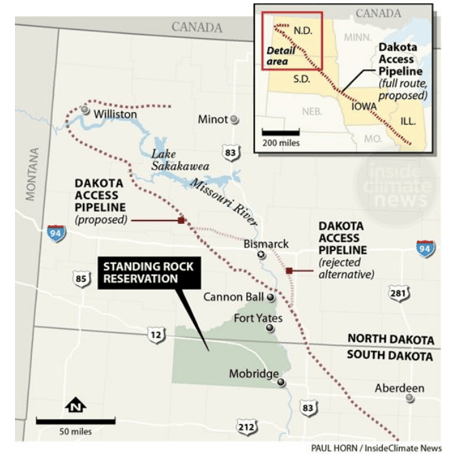
Faith Spotted Eagle, a grandmother and water protector from the Yankton Oyate, explained that the land in question is a “multi-component site,” meaning there are layers and layers of events that have happened on the land.
“I think the most effective way we could get that point across is if all of the sudden the Oceti Sakowin [water protectors] decided to build a project through Arlington Cemetery,” Faith continued, “I think the point would be taken that you don’t disturb people who have been put to rest.”
How does water fall into play?
“I am here to advise anyone that will listen, that the Dakota Access Pipeline is harmful,” said Dave Archambault II, chairman of the Standing Rock Sioux Tribe (Hunkpapa Oyate). He asserted, “It will not be just harmful to my people, but its intent and construction will harm the water in the Missouri River, which was the only clean and safe river tributary left in the United States.”
It is this reasoning that in part prompted the Standing Rock Sioux Tribe to file a federal lawsuit against the U.S. Army Corps of Engineers in June of 2017. The lawsuit claims that the DAPL violates the National Historic Preservation Act and the Clean Water Act, among other laws.
The pipeline crosses at Lake Oahe, a large reservoir behind Oahe Dam on the Missouri River, just a half mile above the Standing Rock Reservation. “Oahe” is Lakota for “foundation,” and those who have been protecting the waters believe that the Missouri River is just that—the foundation of life and their culture.
Reuben Fasthorse, the Lakota Magician, is a member of the Hunkpapa Oyate. When asked his thoughts about the protest, he shared, “I would say that the protestors are not only there out of fear, but also out of anger. Fear of our drinking water being contaminated. Anger because the Army Corp of Engineers flooded the Missouri, and we lost burial sites and land.”
Many share Reuben’s sentiment, and this assertion has resonated with Indigenous tribes and supporters from across the world. The NoDAPL movement has continued in spite of the camp being dismantled in late 2017.
What effect will the NODAPL have on the next generation?
“I think it is a rebirth of a nation. I think that all of these young people here dreamed that one day they would live in a camp like this because they heard the old people telling stories of people living along the river,” Faith Spotted Eagle told CNN. “They heard them talking about the campfires and the horse nation, and they are actually living it—living the dream.”
The camp may have seemed like an impossibility to many—unsafe in this day and age. But, for the Lakota, the camp represented something they lost just over a century ago: a way of life. Their ancestors lived off of the land and remained a vital people without modern luxuries. It was called the “Lakota Way”—a way of honoring Mother Earth, her inhabitants, her land, and her water.
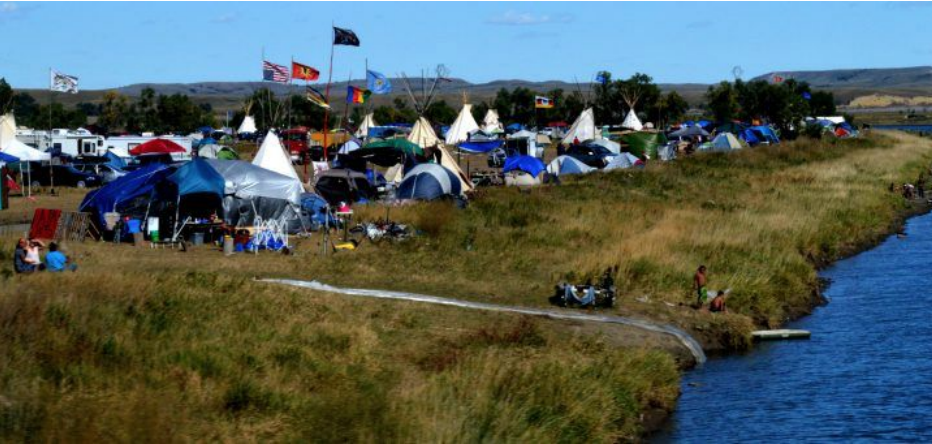
NoDAPL was not a protest but rather a movement. It is a movement to stop what Natives see as the destruction of Mother Earth. It is a spiritual battle—one they have been fighting with prayer.
One Lakota man explains, “The movement is not out of hate but out of love. Songs of love for Mother Earth and her life blood, the water, can be (were) heard nightly [around the camp].”
More than anything, the camp created a sense of identity that Faith mentioned. LaToya posted on Facebook during her stay at camp: “Being at Oceti Sakowin has given me a sense of belonging, a sense of hope. My Ina' [mom] raised me to stand up for what I believe in and to always help others. I am able to do that every day. Also, I've met so many people that have become my family.”
A short victory came for those protesting in Standing Rock when in late 2016, President Obama put a halt on the DAPL construction until the U.S. Corps of Engineers completed an environmental impact study.
A change of the guard
From The Voice of a Generation: Bobbi Jean Three Legs (Part 2) (February 2017)
With the inauguration of President Trump came an executive order to resume the construction of the DAPL. Immediately, the U.S. Army Corps of Engineers issued the easement to the Energy Transfer Partners without conducting the environmental study, and the project resumed. Just like that.
Both the Cheyenne River and the Standing Rock Sioux Tribes filed a motion to issue a temporary restraining order to stop construction of the final section of the Dakota Access Pipeline, which will run under Lake Oahe, until the government fulfills its promise of an environmental impact study. This was rejected.
Rejection was something the Water Protectors are used to hearing. At that point, the few hundred left on the front lines were facing the same opposition they faced one year ago. They were waiting on Judge James Boasberg of the U.S. District Court in Washington, D.C., who according to the Associated Press, ruled "that as long as oil isn't flowing through the pipeline, there is no imminent harm to the Cheyenne River and Standing Rock Sioux tribes."
The judge may not have been considering the threat to so much more than the water supply. The spot is sacred. Those protecting the mní (water) and the spiritual places want to preserve them for the next generation.
The Associated Press also reported, “Judge Boasberg said he would consider arguments more fully at another scheduled hearing on February 27 (2017), at which the Standing Rock Sioux Tribe will seek an injunction against the U.S. Army Corps of Engineers for granting the final easement.”
Why is the environmental impact study so important?
It is not will a pipeline leak? It is when will it leak? The fact is “public concerns over dangerous pipeline leaks are far from ungrounded, as more than 1,650 individual leaks have occurred in the U.S. since 2010, spilling more than 11.5 million gallons of oil.”
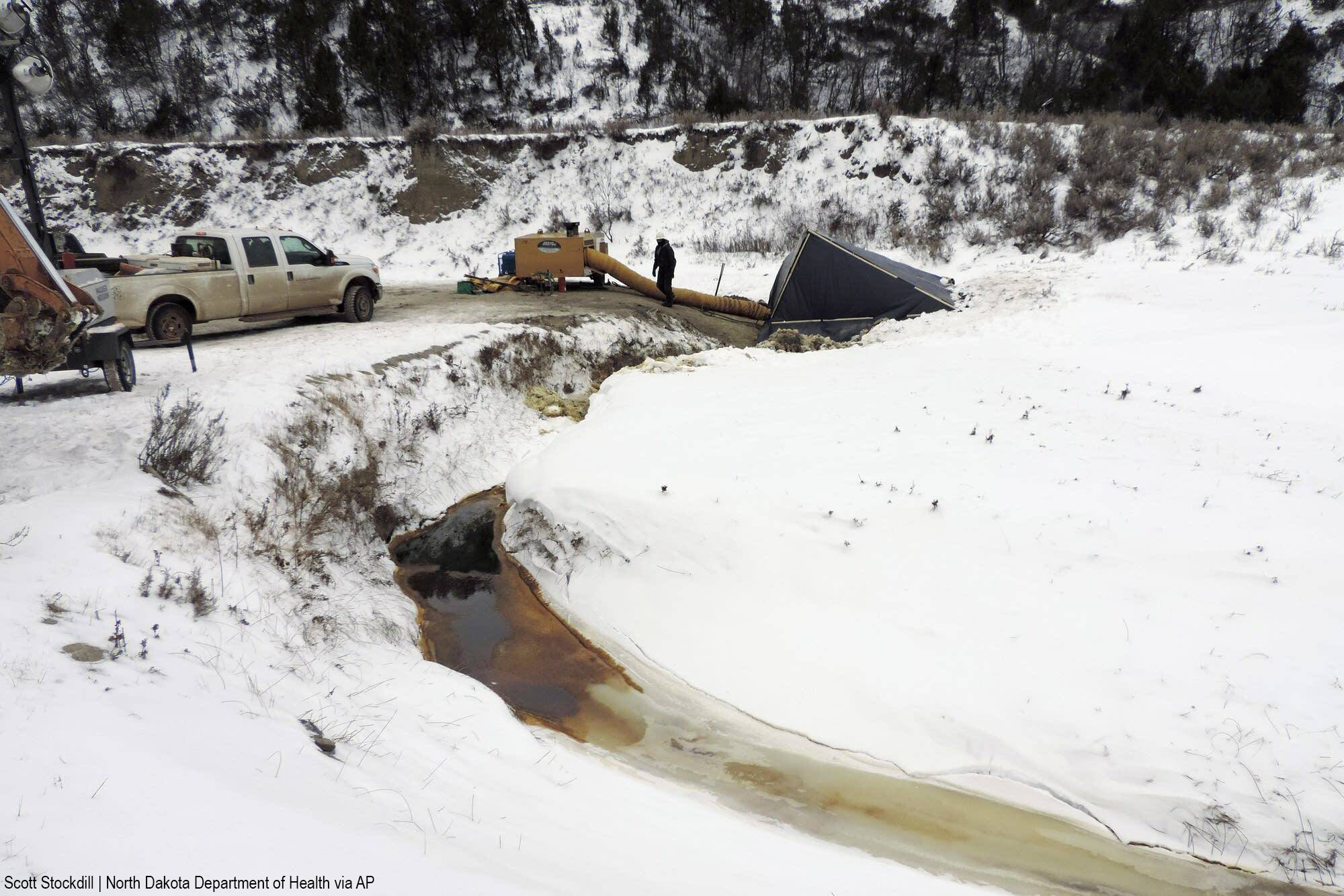
In fact, during the NoDAPL protest at Standing Rock in 2016, a local landowner, Bill Suess, discovered an oil spill on his land near Belfield, ND, from the True Cos’s Belle Fourche pipeline. The spill was due to the pipeline’s electronic leak detection system failing to detect the leak below ground. It was estimated that nearly 176,000 gallons of crude oil leaked into the Ash Coulee Creek. This leak was only 150 miles north of the NoDAPL camp at Cannonball, ND.
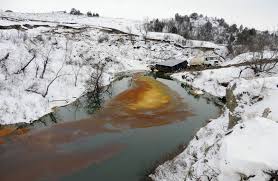 This type of leak is the major concern opponents of the DAPL maintain: a leak under Lake Oahe will contaminate the only clean water source for those along the Missouri River. Additionally, this land was largely tribal lands under the Treaty of Ft. Laramie, 1851, which established the Great Sioux Nation. On these lands are numerous sacred sites including tribal burial grounds.
This type of leak is the major concern opponents of the DAPL maintain: a leak under Lake Oahe will contaminate the only clean water source for those along the Missouri River. Additionally, this land was largely tribal lands under the Treaty of Ft. Laramie, 1851, which established the Great Sioux Nation. On these lands are numerous sacred sites including tribal burial grounds.
Additionally, North Dakota Public Service Commission [NDPSC] has approved a massive expansion that would double the amount of crude oil DAPL carries — from 500 thousand barrels to 1.1 million barrels per day at much higher pressure and speed. This is what raises major concerns for the opponents of the pipeline. In past three years, it has already leaked 10 times—granted they were not major leaks, but a leak is a leak, which highlights the concern that an environmental impact analysis of the DAPL has not been completed by Energy Transfer Operating [ETO-owner of the DAPL].
What is the DAPL ruling?
On July 6, 2020, “Federal Judge James E Boasberg, sitting at the District Court for the District of Columbia, ruled that the construction of the pipeline had fallen short of environmental standards. ‘It therefore needed to undergo a more thorough environmental review than had been conducted by the US Army Corps of Engineers before it could be allowed to continue working.’”
Judge Boasberg's ruling concluded the following: "Given the seriousness of the Corps' Nepa (National Environmental Policy Act) error, the impossibility of a simple fix, the fact that Dakota Access did assume much of its economic risk knowingly, and the potential harm each day the pipeline operates, the Court is forced to conclude that the flow of oil must cease."
The judge ordered the DAPL drained of its oil contents within 30 days of his ruling. It is estimated this environmental analysis will take 13 months to complete. Judge Boasberg added, "the seriousness of the Corps' deficiencies outweighs the negative effects of halting the oil flow. When it comes to NEPA, it is better to ask for permission than forgiveness.”
Will the ruling hold up?
There is no doubt there will be a continued fight. In fact, on July 15, 2020, President Trump swiftly acted against the Judge’s ruling by rolling back the United States’ landmark environmental law: National Environmental Policy Act. The effort to rollback the policy signed into law by President Richard Nixon in 1969. This law has provided the basis for the Standing Rock Sioux Tribe’s lawsuit as it allows communities a voice on how projects like pipelines, highways, and interstates will impact climate change and the health and wellness of citizens—what happens next remains to be seen.
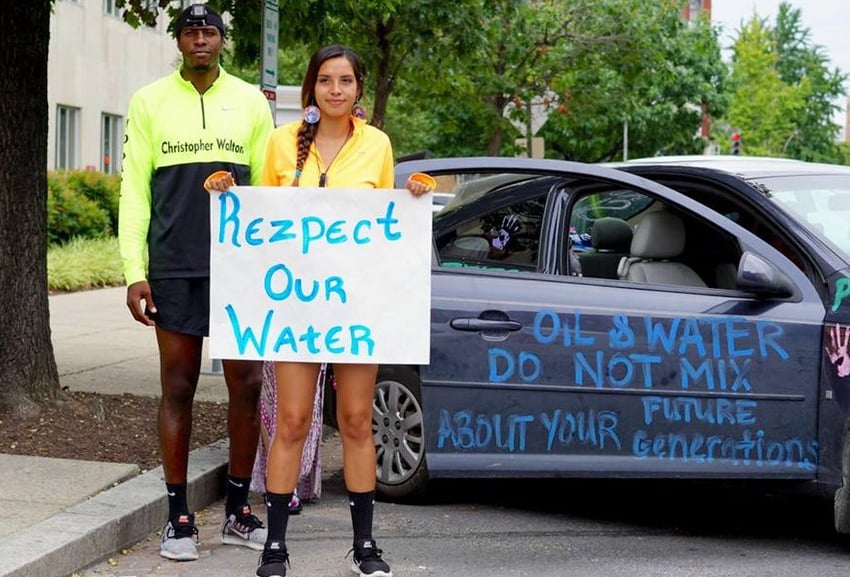
Keeping the NoDAPL movement alive
The breath of life offered by Judge Boasberg’s ruling has invigorated the cries of the Water Protectors: “Mní Wiconí.” The camp at Cannonball, ND, may be a distant memory, but it has given voice—a strong, collective voice for minority communities, especially Indian Country.
Native Americans’ culture, spirituality, and identity are directly entrenched with their land. The earth is a living, breathing entity to cultivate and care for, so that future generations can continue to thrive long after today’s generations are gone. A member of the Oglala Lakota stated of his people, “We’re still here. Who we are is still home to this land, and we’re still going to own up to who we’re called to be. We’re the caregivers of this land, and we care for Mother Earth.”
At Native Hope, we believe in honoring American Indians and their culture with a message of hope and dignity.
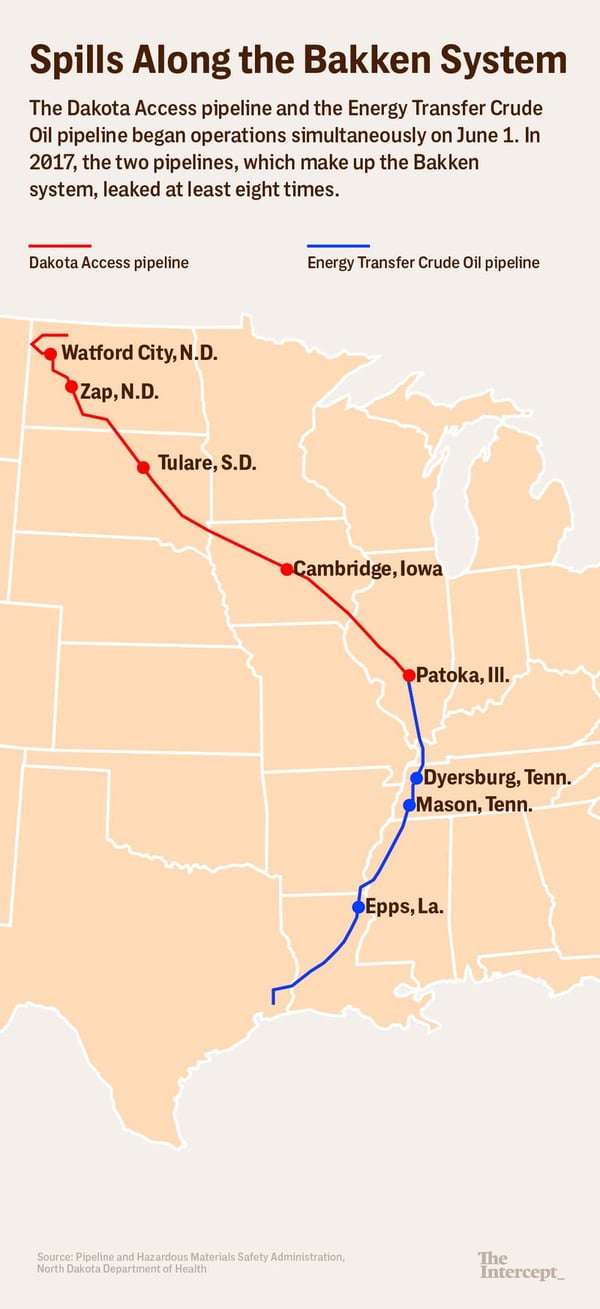
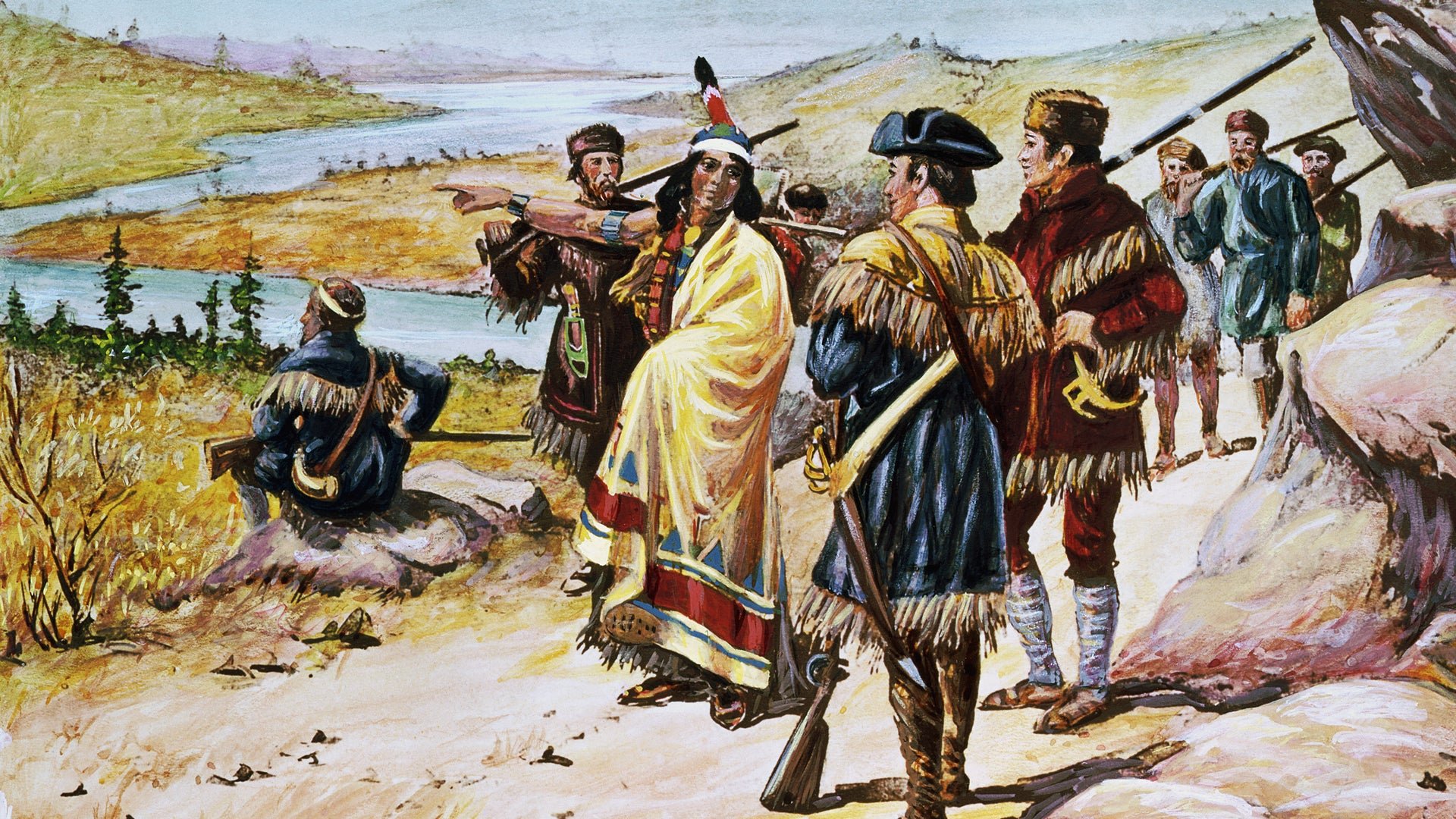
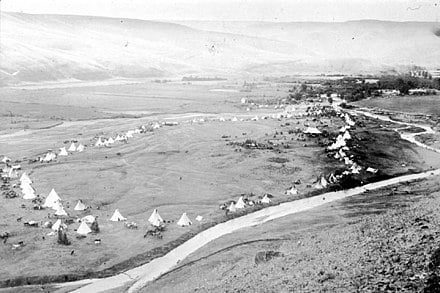

COMMENTS